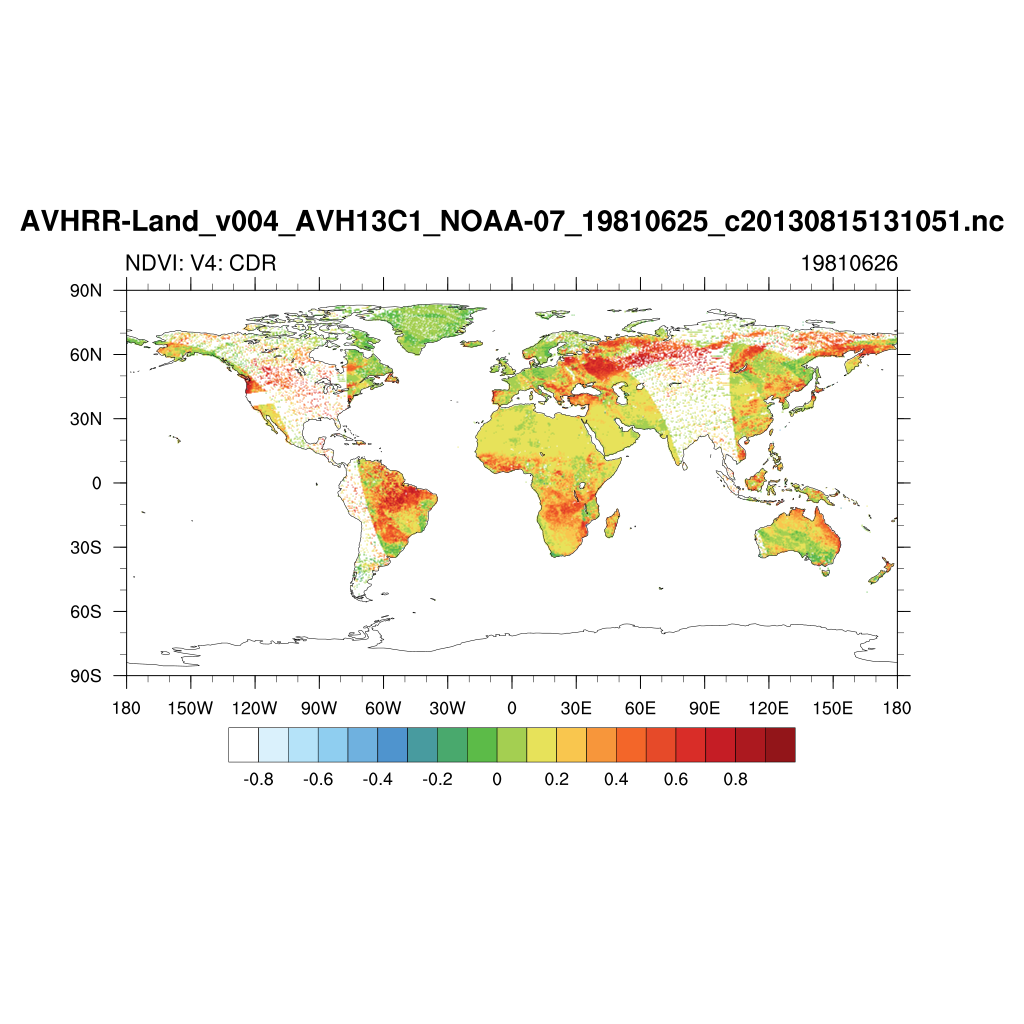NDVI: Normalized-difference-vegetation-index: NOAA AVHRR

Normalized Difference Vegetation Index (NDVI) values are derived from surface reflectance data acquired by the Advanced Very High Resolution Radiometer (AVHRR) sensor. By applying knowledge gathered over time about instrument performance and sensor characteristics, the data are reprocessed to create consistent long-term records, allowing insight into changes in the Earth’s environmental parameters. Specifically, the NDVI data provide the global change and resource management communities with vegetation data for historical trend analysis and vegetation monitoring studies for land surfaces around the globe.
The data are composites of daily values each half-month. This very high resolution (0.05 degrees) dataset is a NOAA Climate Data Record (CDR). As with all operational CDRs, the NDVI CDR meets rigorous quality standards recommended by the National Academy of Sciences and other expert organizations to help ensure consistent and reliable products.
The USGS Remote sensing phenology states: "NDVI values range from +1.0 to -1.0. Areas of barren rock, sand, or snow usually show very low NDVI values (for example, 0.1 or less). Sparse vegetation such as shrubs and grasslands or senescing crops may result in moderate NDVI values (approximately 0.2 to 0.5). High NDVI values (approximately 0.6 to 0.9) correspond to dense vegetation such as that found in temperate and tropical forests or crops at their peak growth stage."
Key Strengths
As a Climate Data Record (CDR), the data are very high quality
Very high resolution (0.05 degrees)
CF conforming netCDF
Key Limitations
Each file contains a geographical segment. Hence, users must import multiple files to construct a cohesive global map.
Eric Vermote, Chris Justice, Ivan Csiszar, Jeff Eidenshink, Ranga Myneni, Frederic Baret, Ed Masuoka, Robert Wolfe, Martin Claverie and NOAA CDR Program (2014): NOAA Climate Data Record (CDR) of Normalized Difference Vegetation Index (NDVI), Version 4. [indicate subset used]. NOAA National Centers for Environmental Information. doi:10.7289/V5PZ56R6
Cite this page
Acknowledgement of any material taken from or knowledge gained from this page is appreciated:
National Center for Atmospheric Research Staff (Eds). Last modified "The Climate Data Guide: NDVI: Normalized-difference-vegetation-index: NOAA AVHRR.” Retrieved from https://climatedataguide.ucar.edu/climate-data/ndvi-normalized-difference-vegetation-index-noaa-avhrr on 2026-01-06.
Citation of datasets is separate and should be done according to the data providers' instructions. If known to us, data citation instructions are given in the Data Access section, above.
Acknowledgement of the Climate Data Guide project is also appreciated:
Schneider, D. P., C. Deser, J. Fasullo, and K. E. Trenberth, 2013: Climate Data Guide Spurs Discovery and Understanding. Eos Trans. AGU, 94, 121–122, https://doi.org/10.1002/2013eo130001



